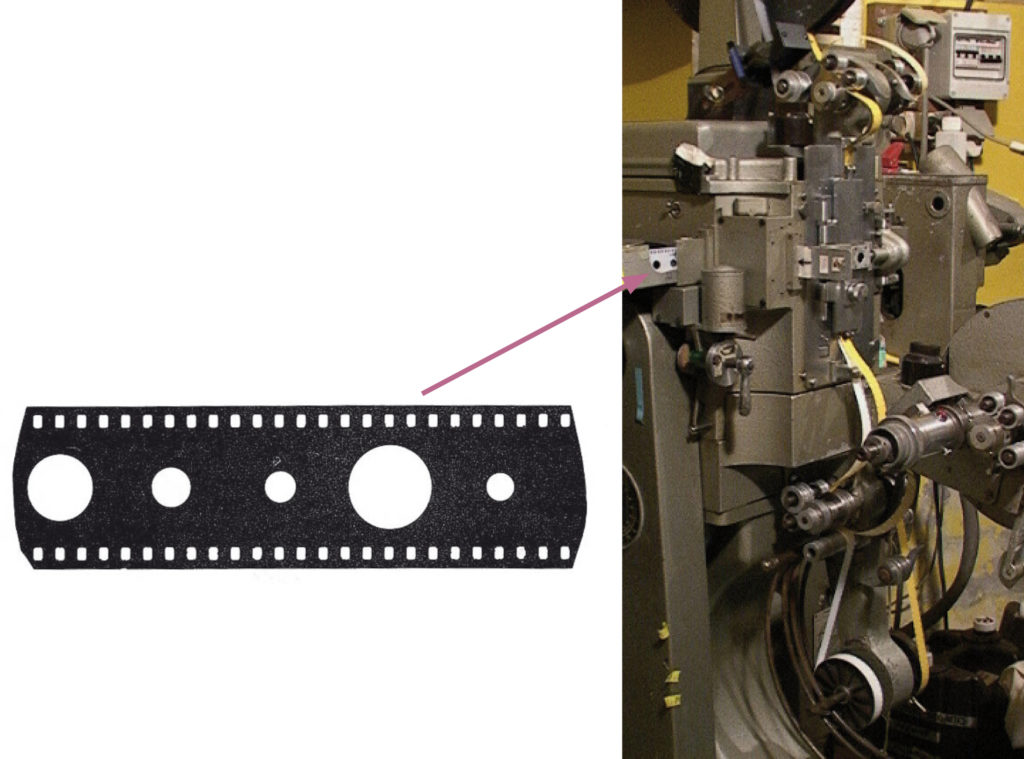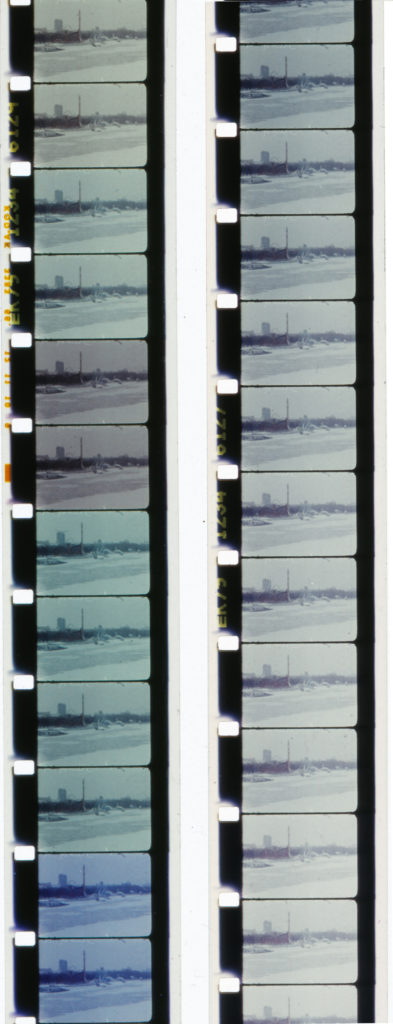
• The contact printer is used to make film prints. It does not do special effects or changes of format.

• Essentially, we use MATIPO printers, one for 16 mm and one for 35 mm. These are like big projectors with additional arms that make it possible to thread the original film and, if necessary, a sound negative together with the raw film to be exposed.

• This involves a system using a filter strip that is placed between the interior light source and the gate, allowing to control the amount of light using smaller or bigger holes. This makes color-timing possible: for black and white film, simply by varying the size of the holes; and for color film, by covering these holes with primary color filters (Yellow, Magenta and Cyan).
• A pre-filter, which is attached to the filter strip, helps to quickly achieve an average value. A specific pre-filter exists for each type of print film stock.
• At the “test” stage, there is a pretty ingenious system that allows us to apply a different light setting every two frames. We develop these test strips and choose the settings that suit us best. This technique allows to figure out color-timing values using a very small amount of film.

• To do this, during the negative cut we set aside sections of the negative (ideally, 50 frames for black and white or 120 frames for color) taken from head or tail outtakes of each shot. We splice these together and use them to get a “rough draft” of the color-timing values before applying them to the “real” film. This is called a “wedge test,” an old cinematographic lab technique that helps us be as economical as possible while still getting perfect results. In any case, we try to!
• When we strike the definitive color-timed print, a system of notches on the edge of the film allows us to advance the filter strip to the next hole at the right moment. A unique filter strip, with the right hole sizes and filters, is created for the print.

• When making a sound print, we also load the sound negative, which is exposed in a different section of the machine. The picture gate exposes only the picture area, while the sound gate – only the soundtrack.
• There is also a 16 mm contact printer by Bell & Howell, the Model C, which works a little differently, and which we use in specific cases, such as for printing Super 16.

